General idea of how to navigate Mexico City
Day 1: Chapultepec
Day 2: Coyoacán
Day 3: Cuauhtémoc
The country of Mexico offers endless cultural travel opportunities, from incredible history, to incredible art and food.
If you’re in Mexico City and don’t want to go too far for this trip, there are two side trips I recommend you do.
Each will take you an entire day, so choose wisely if you’re short on time. Here we go!
Mexico City Day 4, itinerary A: Teotihuacán
 We start the day by hiring either a taxi at the hotel or a special tour that will drive you to “the pyramids”.
We start the day by hiring either a taxi at the hotel or a special tour that will drive you to “the pyramids”.
There are several companies that offer guided tours and some will include a few stops along the way.
Let’s cover two of the possible stops:
Plaza de las Tres Culturas or Plaza de Tlatelolco
The name Square of the Three Cultures refers to the main square in the Tlatelolco neighborhood.
Particularly, the three cultures are:
- The pre-Columbian, represented by the Aztec temple ruins in the middle of the square.
- The Spanish colonial represented by the Santiago de Tlatelolco Catholic church, built in the 16th century.
- And the modern independent Mexico represented by the residential buildings behind.
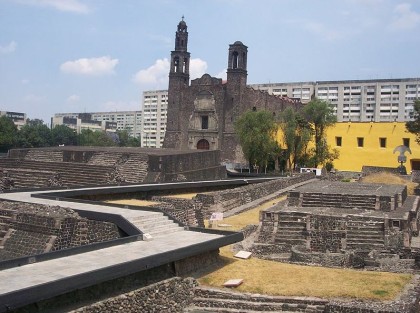
Plaza de las Tres Culturas. Photo: Wikimedia Commons, Gengiskanhg.
Please copy and paste the following link to go to the original image:
https://commons.wikimedia.org/wiki/File:PLAZA_DE_LAS_TRES_CULTURAS-2.jpg
In 1968 the square was the site of the Tlatelolco Massacre, which took the lives of hundreds of civilians and students who were protesting at the square on October 2nd.
They died in the hands of the government at the time. A monument to the fallen stands at the south side of the plaza.
Basílica de la Virgen de Guadalupe
The Basilica of the Virgin of Guadalupe is a church that was built to house the miraculous image of the Virgin Mary which was imprinted in the cloak of the peasant Juan Diego when she appeared in front of him in 1531.
Even if you’re not catholic, the building itself has an astonishing modern design with interior chapels in two levels. You really have to see it to appreciate the intricate design.
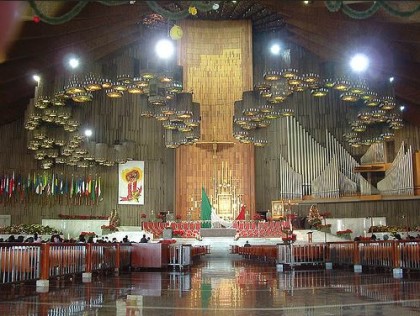
Interior of the Basilica de Guadalupe. Photo: http://mexico-tradicost137.blogspot.com
The modern Basilica (1976) replaced the old Basilica (1531-1709) (just next door) which was sinking because Mexico City was built on a lake (remember?) and it was too small for the growing number of pilgrims and worshippers.
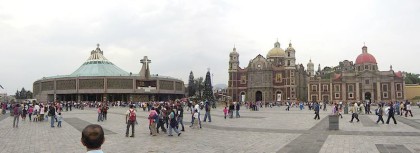
Panoramic view of Basilica of Our Lady of Guadalupe, Ancient Basilica, Capuchin nuns’ Temple and Plaza Mariana. Mexico City. Photo: Wikipedia, ProtoplasmaKid.
Please copy and paste the following link to go to the original image:
https://commons.wikimedia.org/wiki/File:Basilica-PlazaMariana.jpg
Pirámides de Teotihuacán
Now off to the pyramids. I recommend you use Discover Teotihuacán (no affiliation) as your tour company. I know them and they’re service is great.
Teotihuacán is the name of the archaeological site of the largest ancient pyramids of the American continent and is located about 50 km (30 mi) from the city center.
Most people think that Teotihuacán was built by the Aztecs, but in actuality, when the Aztecs came to the region, the pyramids were already old.
There are several theories about the place, none definitive. Evidence suggests that several different pre-hispanic cultures such as the Nahua, Otomi or Totonac inhabited the city at one point or another.
Teotihuacán was a city with a population of approximately 125.000 people. It was founded around 100 BC and it lasted until de 7th or 8th century at which point it was one of the largest cities in the world.
You can see temples and some murals at the site today. The Museo de Sitio (Site museum) offers a fantastic model of the city, located next to the Pyramid of the Sun.
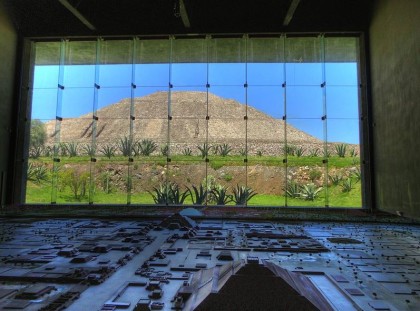
Sun Pyramid and the Teotihuacán Diorama at the Museo de Sitio. Photo: Wikipedia, Fjhuerta.
Please copy and paste the following link to go to the original image:
http://en.wikipedia.org/wiki/File:SunPyramid.jpg
The Pyramid of the Sun and the Pyramid of the Moon are the two largest structures. They both have steep staircases, so you can climb them. If you’re in excellent physical shape, that is.
They flank the Calzada de los Muertos (Avenue of the Dead) which is the main avenue at the site.
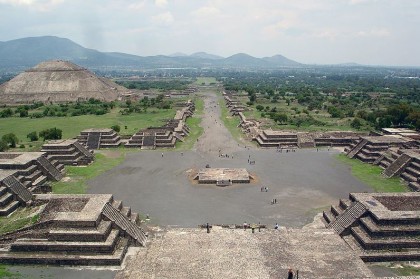
Teotihuacán, Calzada de los Muertos, View of the Avenue of the Dead and the Pyramid of the Sun, from Pyramid of the Moon (Pyramide de la Luna). Photo: Wikipedia, Jackhynes.
Please copy and paste the following likn to go to the original image:
https://commons.wikimedia.org/wiki/File:View_from_Pyramide_de_la_luna.jpg
The history of Teotihuacán is somewhat nebulous, nobody can really say what the purpose of the pyramids was, there are bits and pieces all over, but not a definitive theory.
As you walk through the site you will be able to see portions of restores stone in a different color. Ask your guide.
Teotihuacán is part of the UNESCO World Heritage Site list, it was included in 1987. Click here to go to an online virtual tour.
The visit will take the entire day. Take advantage of the crafts shop (again, no affiliation), it offers some unique crafts not found anywhere else. Lunch is generally included in the price of the tour. Fee is about $60.
Mexico City Day 4, itinerary B: Xochimilco
Xochimilco per se is one of the 16 boroughs that form Mexico City. What’s most representative of Xochimilco is its extensive canal system which earned it the nickname “the Mexican Venice”.
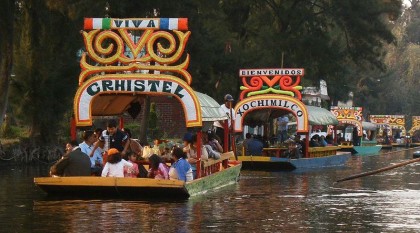
Trajineras in Xochimilco. Photo: Wikipedia, Jflo23.
There are about 170 km (110 mi) of canals which are a vestige of the city of Xichimilco’s pre-hispanic past on the shore of Lake Xochimilco, as well as its chinampas or artificial islands along the canals.
If you want a magical day, full of color and great food and culture, Xochimilco is your place.
Hop on a trajinera, a gondola like small boat that may have different purposes. Some carry mariachis. Some are complete restaurants. Some you just hop on, to enjoy the view. Fee is about $30 for a ride.
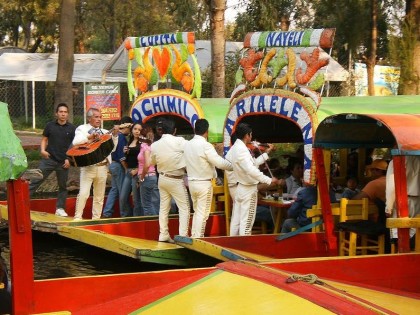
Mariachis playing for tourists on the canals. Photo: Wikipedia, Jflo23.
Xochimilco is a World Heritage Site, even though damage to the environment regarding both the canals and the chinampas has put it at risk.
You can get to Xochimilco by metro, using line 2 until Tasqueña station. Get off and then find the light train, whose last station is Xochimilco.
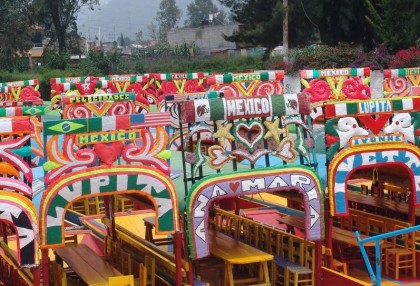
Brightly painted trajineras in Xochimilco. Photo: Wikipedia, Gengiskanhg.
Please copy and paste the following link to go to the original image:
https://commons.wikimedia.org/wiki/File:XochimilcoBoats-Mexico.jpg
This is the last article of the series. You can pick and choose which daily itinerary you want to do, according to your available time.
I think there’s a bit of everything for everybody and you’ll agree with me that Mexico is just endless fun and endless culture.
The richness of their history is amazing and the variety of their cultural offer makes Mexico a must see country.
Which of the itineraries is your favorite? Why?
Come and share your comments in the field below or join the conversation in Facebook!
Articles of the series:
General idea of how to navigate Mexico City
Day 1: Chapultepec
Day 2: Coyoacán
Day 3: Cuauhtémoc
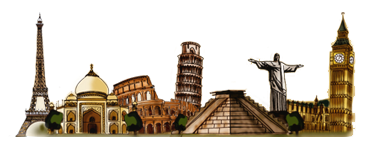
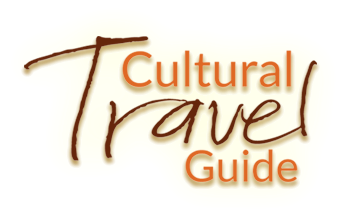

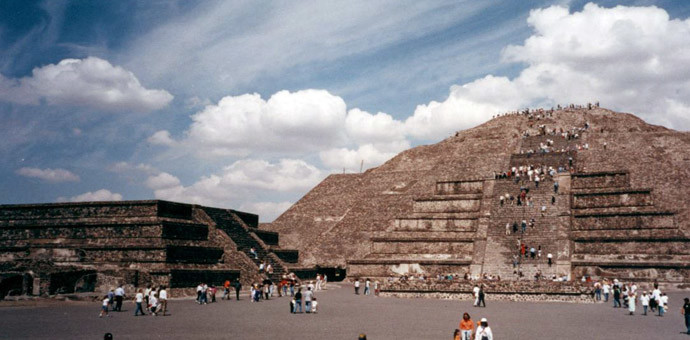
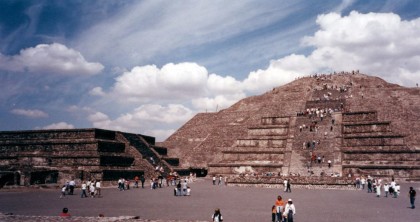
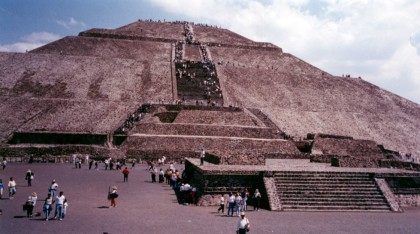
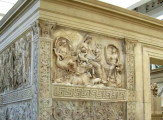
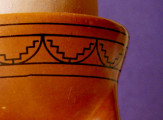
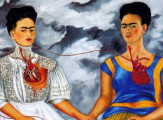
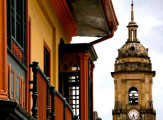

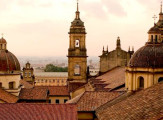
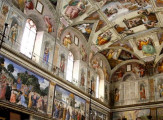
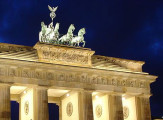
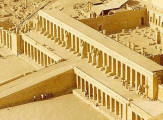
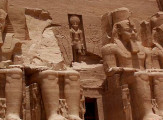


















Leave a Comment
Want to join the discussion?Feel free to contribute!